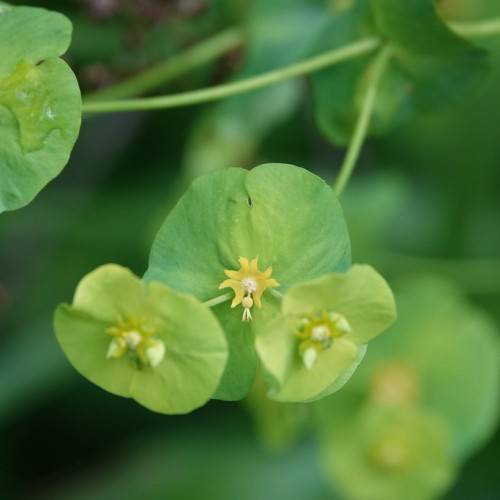
spurge
Euphorbia amygdaloides
Also Known As - Mrs. Robb's bonnet,purple wood spurgeCycle:
Herbaceous Perennial
Watering:
Minimum
Hardiness Zone:
6 - 8
Flowers:
Flowers
Sun:
Full sun,part shade
Soil:
Humus rich
Fruits:
Fruits In Summer Ready In Summer
Leaf:
Yes
Growth Rate:
Moderate
Maintenance:
Low
Drought Tolerant:
Yes
Salt Tolerant:
Yes
Thorny:
Yes
Invasive:
Yes
Care Level:
Medium
watering
Watering spurge plants is best done once every week to 10 days. During the spring and summer months, it is best to water deeply once a week, allowing the soil to completely dry out between waterings. During the cooler months of fall and winter, reduce watering to once every 10 days. Avoid overwatering spurge plants, as too much water can cause root rot. If you notice that the foliage has wilted or that the soil is staying too wet for long periods of time, reduce the amount of water given.
sunlight
Spurge prefers full sun to help it bloom in the spring and summer months. It grows best in areas with at least 4-6 hours of direct sunlight a day, preferably during the morning or early afternoon. It can also survive in areas that receive partial sun, such as north and west-facing window sills, as long as they receive a minimum of 3 hours of daily sunlight. In the winter, spurge is dormant and needs less sunlight. It can survive with just 2 hours of direct sun a day.
pruning
In general, Spurge (Euphorbia amygdaloides) should be pruned in late winter or early spring. During this time, any dead or damaged branches can be trimmed away to ensure new growth in the spring. If your Spurge has grown too tall for the area it is in, you can trim it back by up to half its size to control the size and shape of the plant. When pruning, be sure to use sharp cutting tools and wear gloves to protect yourself from the milky sap Spurge produces.
